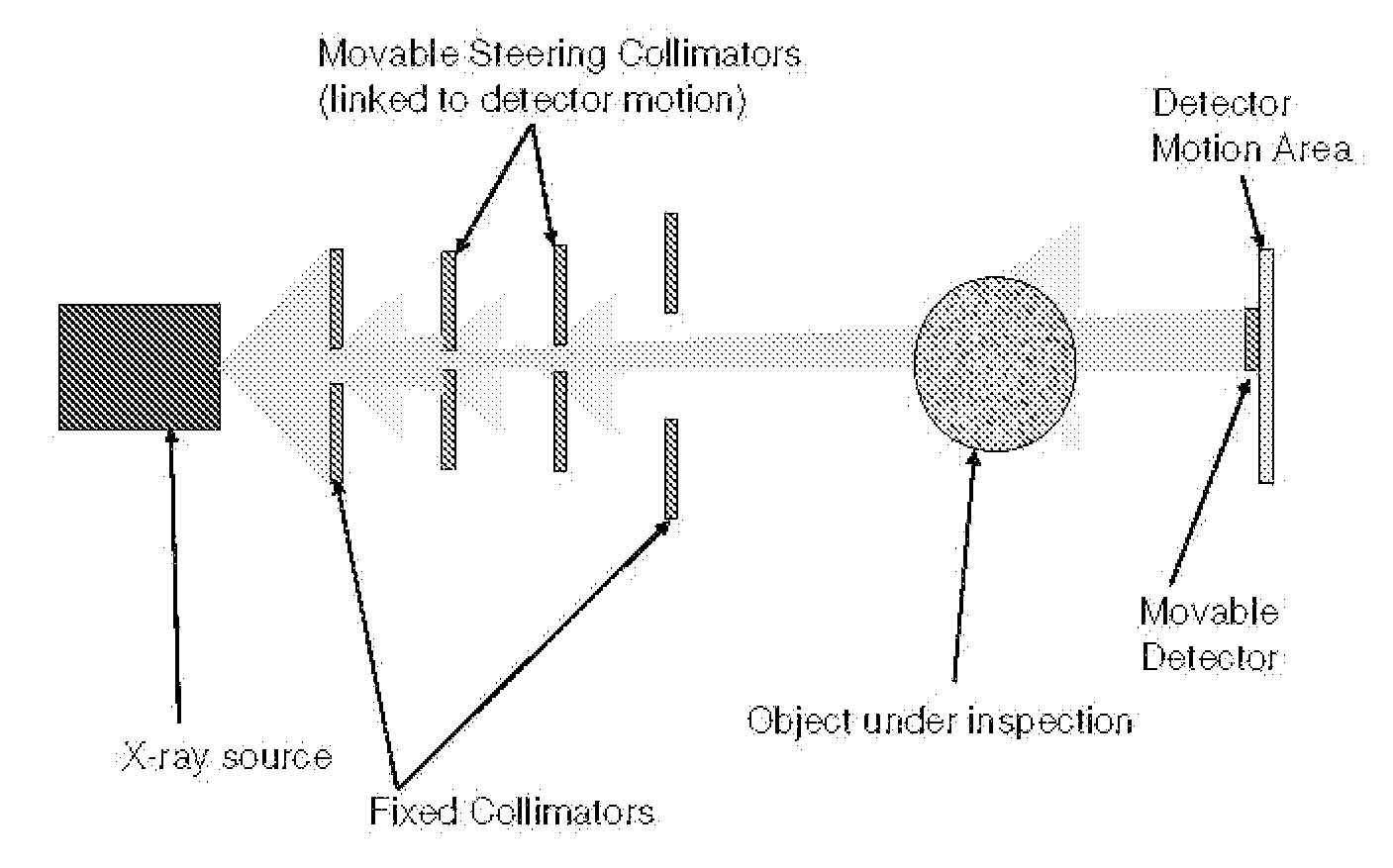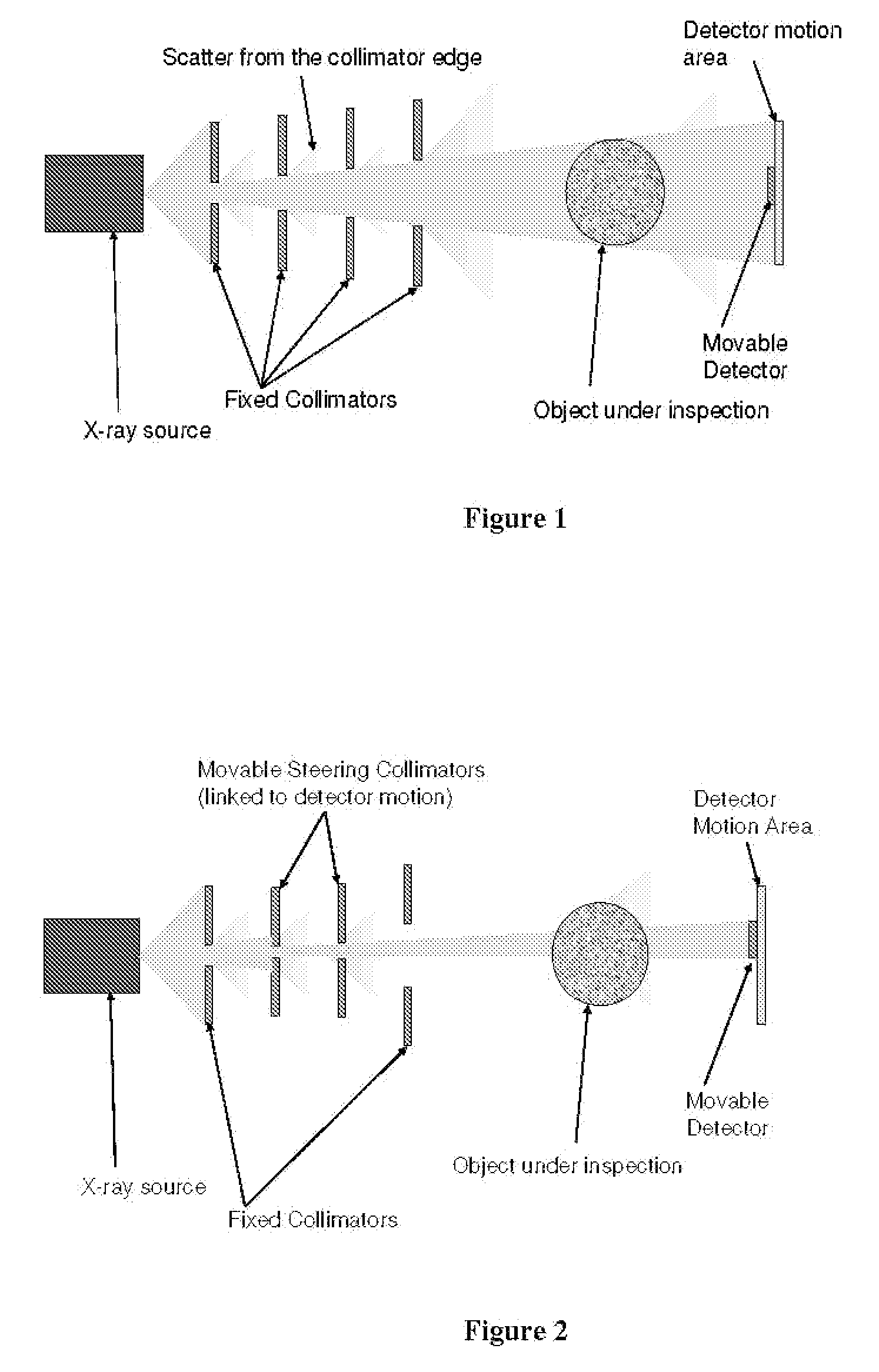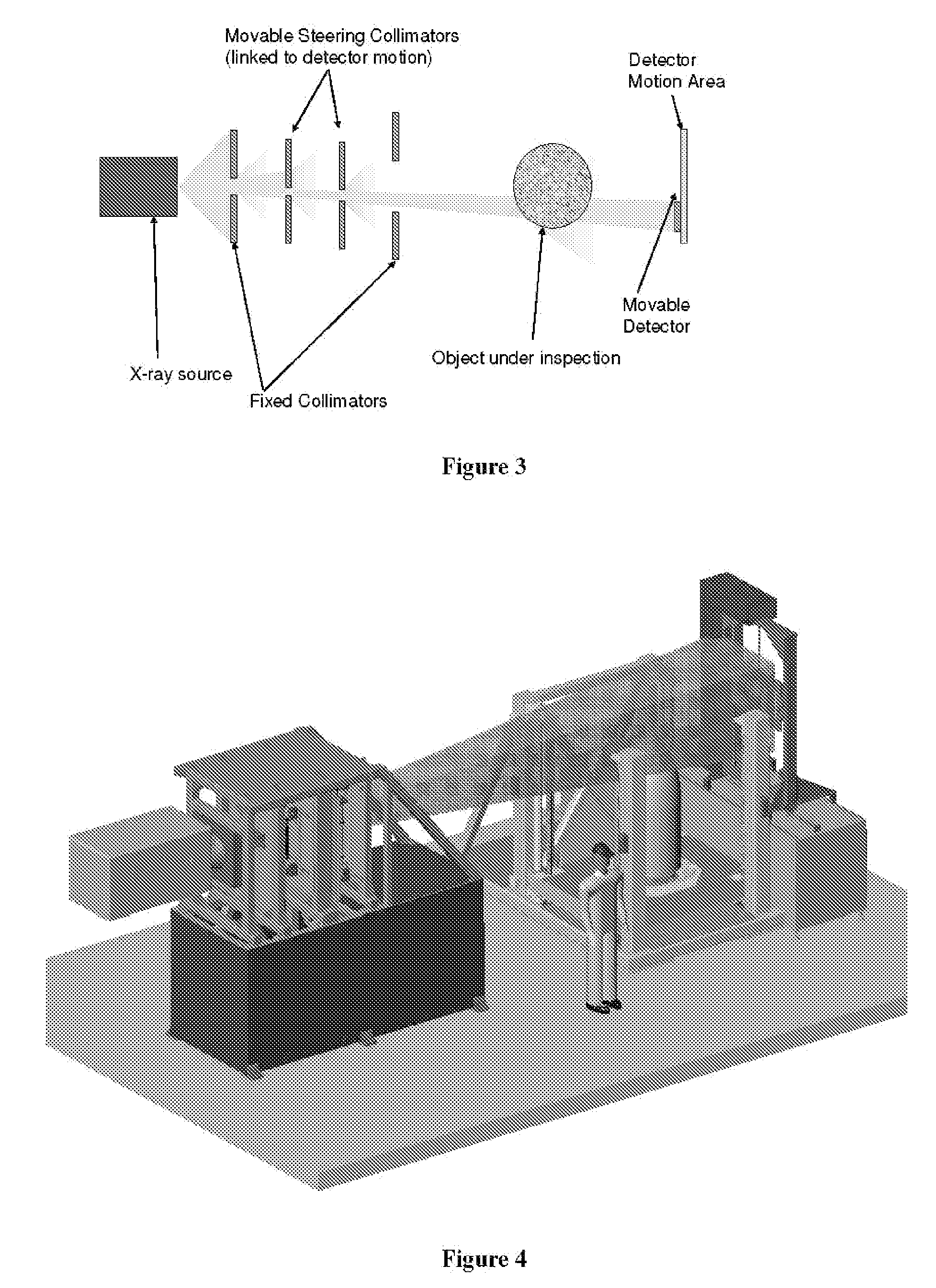Steerable Multistage Collimation for Radiographic Imaging
a radiographic imaging and multi-stage technology, applied in the field of radiographic imaging, can solve the problems of significant radiation emission from the object being irradiated, negative influence on the resolution and sensitivity of the imaging system, and typical collimators are not able to adequately filter beams, etc., to achieve the effect of reducing scatter and large area imagining
- Summary
- Abstract
- Description
- Claims
- Application Information
AI Technical Summary
Benefits of technology
Problems solved by technology
Method used
Image
Examples
Embodiment Construction
[0016] The present invention provides systems and process for minimizing scatter in radiographic systems. Preferred embodiments of these systems and processes are discussed below. It is to be expressly understood that this descriptive embodiment is provided for explanatory purposes only and is not meant to limit the scope of the claimed invention. Other types and uses of the systems and processes are also considered to be within the scope of the present invention.
[0017] The present invention includes a novel method for reducing scatter in radiographic imaging systems while permitting large area imaging. Multiple collimators are used to successively trim the radiation beam to match the detector plate while simultaneously eliminating scatter from the previous stages. The movable collimation stages, in conjunction with nonmoving scatter reduction stages, trim the beam to match the detector area. For larger part imaging, the detector may move. The present invention allows the collimato...
PUM
 Login to View More
Login to View More Abstract
Description
Claims
Application Information
 Login to View More
Login to View More - R&D
- Intellectual Property
- Life Sciences
- Materials
- Tech Scout
- Unparalleled Data Quality
- Higher Quality Content
- 60% Fewer Hallucinations
Browse by: Latest US Patents, China's latest patents, Technical Efficacy Thesaurus, Application Domain, Technology Topic, Popular Technical Reports.
© 2025 PatSnap. All rights reserved.Legal|Privacy policy|Modern Slavery Act Transparency Statement|Sitemap|About US| Contact US: help@patsnap.com



